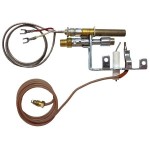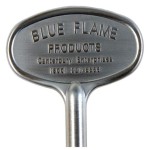How to Reface a Brick Fireplace
Refacing a brick fireplace provides a method for updating the aesthetic appearance of a room without undertaking a full-scale demolition and rebuilding project. A brick fireplace, while often a desirable feature, can become dated or simply not align with current design preferences. Refacing offers a cost-effective and less intrusive alternative, allowing homeowners to personalize their living space while retaining the functionality of the fireplace.
The process of refacing a brick fireplace involves covering the existing brick surface with a new material. This material can range from tile and stone veneer to wood panels or even a skim coat of concrete. The choice of material significantly impacts the final look, the difficulty of installation, and the overall cost of the project. Careful planning and preparation are essential for a successful outcome.
Assessing the Existing Fireplace Structure
Before embarking on a refacing project, a thorough assessment of the existing brick fireplace is crucial. This evaluation should encompass several key aspects. Primarily, the structural integrity of the brickwork must be verified. Cracks, crumbling mortar, or loose bricks indicate underlying problems that need to be addressed before any refacing material is applied. Ignoring these issues can lead to instability in the new facing and potentially pose safety hazards.
In addition to structural soundness, the fireplace's compliance with current building codes should be confirmed. This is particularly important if the refacing project involves altering the dimensions of the fireplace opening or affecting the ventilation system. Local building codes vary, and it may be necessary to consult with a qualified inspector to ensure compliance.
Finally, the type of fireplace must be considered. Wood-burning fireplaces, gas fireplaces, and electric fireplaces each have unique requirements. For instance, wood-burning fireplaces generate significant heat, and the refacing material must be non-combustible and resistant to high temperatures. Gas fireplaces require proper ventilation and gas line connections that must be handled by a qualified professional. Electric fireplaces typically generate less heat and offer greater flexibility in terms of material selection.
Preparing the Brick Surface
Proper surface preparation is paramount for ensuring a strong bond between the existing brick and the new refacing material. The first step involves cleaning the brick thoroughly. This removes dirt, dust, soot, and any loose debris that could impede adhesion. A wire brush and a solution of trisodium phosphate (TSP) or a similar degreasing cleaner are effective for this purpose. The brick should be scrubbed vigorously and then rinsed thoroughly with clean water to remove all traces of the cleaning solution.
After cleaning, any loose or damaged mortar joints should be repaired. This involves removing the deteriorated mortar with a chisel and hammer and then applying fresh mortar to fill the gaps. The new mortar should be allowed to cure completely before proceeding with the refacing project. This curing process typically takes several days, depending on the type of mortar used and the ambient temperature.
Depending on the chosen refacing material, it may be necessary to apply a bonding agent or a scratch coat to the brick surface. A bonding agent improves the adhesion between the brick and the new material, while a scratch coat provides a rough surface for the new material to grip onto. The specific type of bonding agent or scratch coat will depend on the type of refacing material being used, and the manufacturer's instructions should be carefully followed.
Selecting and Installing the Refacing Material
The selection of the refacing material is a critical decision that significantly impacts the final aesthetic and functionality of the fireplace. Tile and stone veneer are popular choices due to their durability, heat resistance, and wide range of styles and colors. These materials are typically installed using thin-set mortar, and the installation process involves carefully aligning and spacing the tiles or stones to create a visually appealing pattern.
Wood panels offer a warmer and more traditional look, but they must be treated with a fire-retardant coating to ensure safety. Wood panels are typically attached to the brick using construction adhesive and fasteners. The installation process requires precise measurements and cuts to ensure a seamless and professional finish.
A skim coat of concrete provides a modern and minimalist look. This involves applying a thin layer of concrete over the brick surface and then smoothing it out to create a smooth, even finish. Concrete can be stained or painted to achieve the desired color and texture. The application of the skim coat requires specialized tools and techniques to ensure a consistent and professional result.
Regardless of the chosen material, precise measurements and careful planning are essential for a successful installation. A level and a measuring tape should be used to ensure that the refacing material is properly aligned and evenly spaced. It is often helpful to dry-fit the material before applying any adhesive or mortar to ensure that everything fits properly.
The installation process should always be performed in accordance with the manufacturer's instructions for the chosen refacing material. This will ensure that the material is properly installed and will perform as expected over time.
Addressing the Fireplace Mantel and Surround
The fireplace mantel and surround are integral components of the overall fireplace design. When refacing a brick fireplace, it is important to consider how the new facing will complement the existing mantel and surround. In some cases, it may be necessary to remove the existing mantel and surround and replace them with new ones that better suit the new aesthetic.
If the existing mantel and surround are in good condition and align with the new design, they can be retained and incorporated into the refacing project. However, it may be necessary to refinish or repaint them to match the new facing. The color and style of the mantel and surround should be carefully considered to ensure that they create a cohesive and visually appealing look.
When installing a new mantel, it is important to ensure that it is properly supported and securely attached to the fireplace structure. The weight of the mantel should be adequately supported, and the fasteners used to attach it should be appropriate for the type of material used in the mantel and the fireplace structure. It is also important to ensure that the mantel is positioned at a safe distance from the fireplace opening to prevent it from overheating.
The surround is the area immediately surrounding the fireplace opening. It can be made of various materials, including tile, stone, wood, or metal. The surround should be chosen to complement the mantel and the facing and to provide a visually pleasing frame for the fireplace opening. The installation of the surround should be carefully planned and executed to ensure a seamless and professional finish.
Safety Considerations
Refacing a brick fireplace involves working with various tools and materials that can pose safety hazards if not handled properly. It is important to wear appropriate personal protective equipment (PPE), such as safety glasses, gloves, and a dust mask, to protect against eye injuries, skin irritation, and respiratory problems.
When working with power tools, such as saws and drills, it is important to follow the manufacturer's instructions carefully and to use the tools in a safe and responsible manner. Power tools should be inspected regularly for any signs of damage or wear and tear, and they should be properly maintained to ensure optimal performance.
When working with adhesives, mortar, and other chemical products, it is important to read and follow the manufacturer's safety instructions carefully. These products can contain volatile organic compounds (VOCs) that can be harmful if inhaled. The work area should be well-ventilated to minimize exposure to VOCs, and appropriate respiratory protection should be worn if necessary.
If the refacing project involves working with gas lines or electrical wiring, it is essential to hire a qualified professional to perform the work. Gas lines and electrical wiring can be extremely dangerous if not handled properly, and any mistakes can have serious consequences.
Finally, it is important to be aware of the potential for falls when working at heights. If the refacing project involves working on a ladder or scaffolding, it is important to use these structures safely and to take precautions to prevent falls. The ladder or scaffolding should be properly positioned and secured, and the work area should be kept clear of obstructions.

Reface A Fireplace With The Look Of Stone Or Brick Barron Designs

Our Transformed Fireplace Before After Reface Diy Update

16 Red Brick Fireplace Makeover Ideas

How I Refaced My 1970 S Brick Fireplace Easily And Inexpensively
:max_bytes(150000):strip_icc()/MadetobeaMommaBefore-5bb2476446e0fb002607ad4f.jpg?strip=all)
Before And After Fireplace Makeovers

How To Cover A Brick Fireplace With Wood Stone Nina Hendrick Home Remodel Diy

16 Red Brick Fireplace Makeover Ideas
Refacing A Brick Fireplace Diy Home Improvement Forum

15 Fabulous Fireplace Refacing Ideas Average But Inspired

How To Plaster A Brick Fireplace So Much Better With Age
Related Posts








